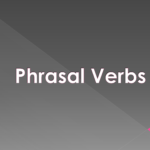Exercise 1 – Chain-stores are groups of shops that belong to the same person or company. These can be found on nearly all UK high streets (= main / most important shopping streets).
Match the names of some of the most common chain-stores in the box with their description from numbers 1 – 20.
Argos * Barclays * Boots * Cargo * Clarks * Dixons * Hallmark * HMV * Holland and Barrett * Marks and Spencer * Prêt a Manger * Next * Robert Dyas * Specsavers * Starbucks * Tesco * The Link * Thomas Cook * Waterstones * W.H.Smith
1. ______is one of the biggest bookshop chains in the UK.
2. ___________only sells mobile phones, mobile phone contracts and mobile phone accessories.
3. ___________mainly sells beauty products, toiletries and medicines.
4. __________is a department store that mainly sells clothes, but is also popular for its range of high-quality food.
5. _____________specialise in health foods.
6. __________is the place to go for greetings cards and small gifts.
7. __________sells kitchen, household and garden products and furniture.
8. __________is well-known mainly for its men’s and women’s clothes and clothing accessories.
9. ___________mainly sells stationery, greetings cards, books, magazines and newspapers.
10. __________only sells shoes and shoe-related products.
11. ___________sells delicious sandwiches and non-alcoholic drinks (usually to take away).
12. ___________is one of several high street coffee shops.
13. ____________is a shop that sells electronic equipment, especially music systems, televisions, computers and cameras.
14. ______________is one of the UK’s best hardware stores.
15. __________is the place you should go for glasses and contact lenses.
16. __________sells mainly CD’s, DVD’s and computer games.
17. _________is a good place to go to book a trip or holiday, or buy and sell foreign currency.
18. ____________is one of the biggest supermarket chains in the UK.
19. _________is a shop where you order goods from a catalogue, pay for them, and collect them from a counter in the shop.
20. ___________is one of the biggest bank chains in the UK.
Correct Answers
- Waterstones
- The Link
- Boots
- Marks and Spencer (often simply called Marks by shoppers)
- Holland and Barrett
- Hallmark
- Cargo
- Next
- W.H. Smith (often simply called Smith’s by shoppers)
- Clarks
- Prêt a Manger
- Starbucks
- Dixons
- Robert Dyas
- Specsavers
- HMV
- Thomas Cook
- Tesco
- Argos
- Barclays
Exercise 2 – Many countries have legislation in place to protect the rights of consumers. In the United Kingdom they are protected by laws such as the Sale of Goods Act, the Supply of Goods and Services Act, the Distance Selling Regulations, the Consumer Protection Act and the Consumer Credit Act.
accurate description * as described * claim for compensation * cooling-off period * credit card fraud * credit voucher * defective * delivery arrangements * fit for intended purpose * give a refund * guarantee or warranty * opt out of * poor workmanship * proof of purchase * reasonable care and skill * reasonable charge * receipt * responsibilities and liabilities * satisfactory quality *specified period * unsolicited mail * unsolicited telemarketing * wear and tear * within a reasonable time * written confirmation
1. Providers of goods and services (including credit providers and hire companies) all have ____________ towards the customer which are aimed at protecting the customer and his / her rights.
2. When you buy goods, they must be of ____________: the condition they are in should match your expectations based on the price you paid. They should also be ‘____________’ (in other words, they must match the description made by the provider and / or the manufacturer), and they must be ‘____________’ (they should do what you expect them to do).
3. All goods must carry a ____________ in case they go wrong or do not meet your expectations.
4. If you need to return goods to a shop or other supplier, you should do so ____________: many shops and suppliers specify their own limit, usually 28 days, and can refuse to do anything if there is evidence of unreasonable ____________ (signs that the goods have been used more than is normal or for a purpose for which they were not designed).
5. If you take goods back to a shop, they are entitled to ask for ____________, such as a ____________, a credit card slip, etc, that shows you actually bought the goods from them.
6. Many shops may refuse (illegally, if the product you have bought is faulty or ____________) to ____________, and instead of returning your money will offer you a ____________ to use in that shop at a later date.
7. Where certain goods or services are ordered on the Internet, on-line shops should offer their customers a ____________ after they have ordered them, in case the customer decides to suddenly cancel their order.
8. On-line (Internet) shops should give the customer an ____________ of the goods being sold, and clearly state the price, ____________ and options (how and when the customer can expect to receive their goods, whether there is an extra charge for postage, et(c).
9. On-line shops should also protect customers against ____________, and should allow customers to ____________ receiving further information and ____________, ____________ or unsolicited emails. They should also send the customer ____________ of their order (often in the form of an email sent after the order has been placed).
10. If a service is being provided (for example, a mobile phone contract), and there is a ____________ for the contract, this must be clearly stated by the provider.
11. If you buy faulty goods with a credit card, and those goods cost between £100 and £300, you have an equal ____________ against the seller of the goods and the credit card company.
12. Where a service such as the repair of a car is being provided, it should be done with ____________ (an unsatisfactory standard of work or general ____________ should not be accepted by the customer) for a ____________ (the customer should not have to pay an excessive amount of money) and within a reasonable time.
Correct Answers
- responsibilities and liabilities
- satisfactory quality / ‘as described’ / ‘fit for purpose’
- guarantee or warranty
- within a reasonable time / wear and tear
- proof of purchase / receipt
- defective / give a refund / credit voucher
- cooling-off period
- accurate description / delivery arrangements
- credit card fraud / opt out of / unsolicited mail / unsolicited telemarketing / written confirmation
- specified period
- claim for compensation
- reasonable care and skill / poor workmanship / reasonable charge



